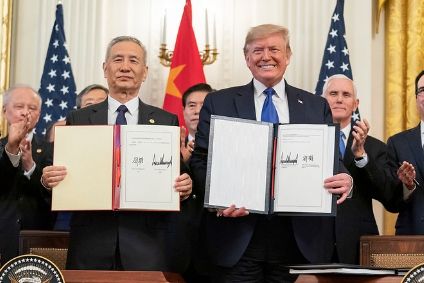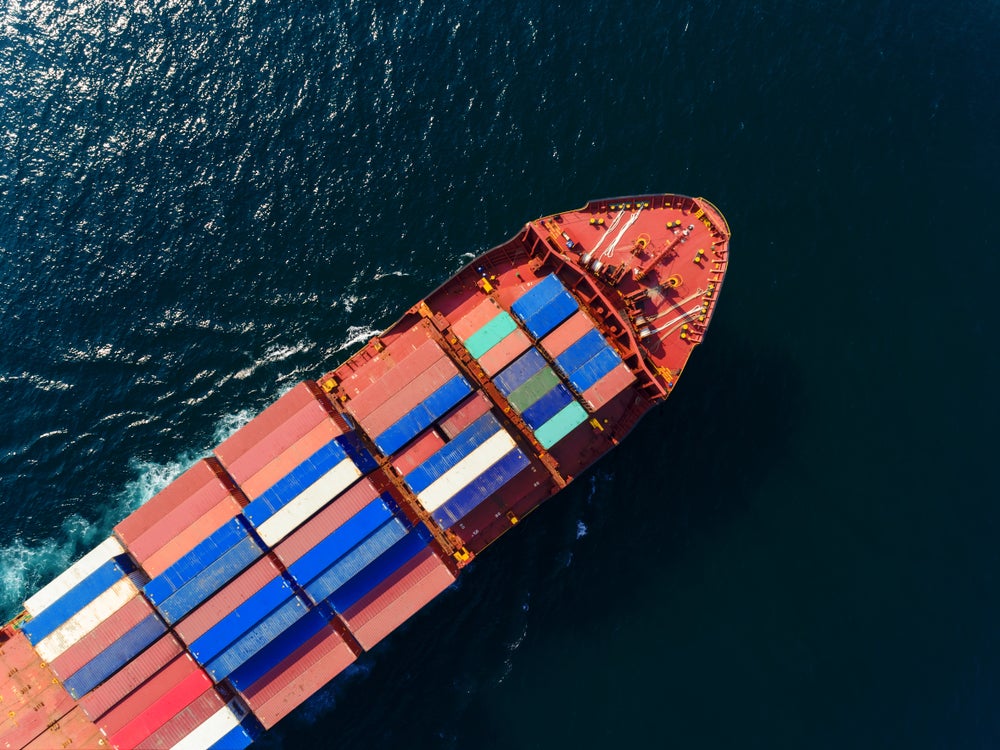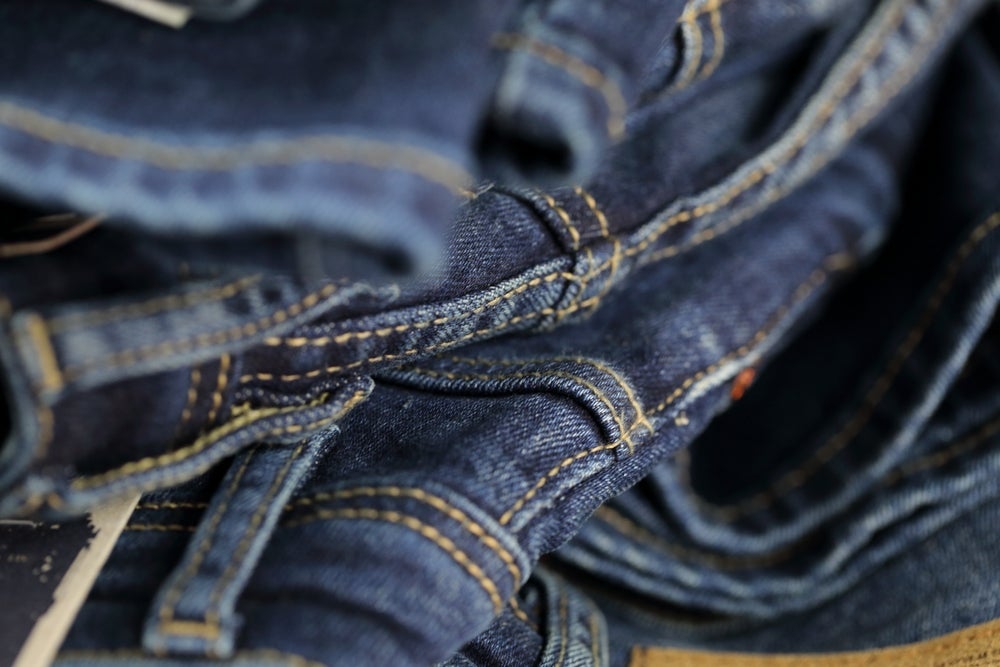
The latest monthly round-up of updates to key free trade agreements and trade preference programmes involving the United States and European Union covers developments in January 2020.
UNITED STATES
United States-Mexico-Canada Free Trade Agreement (USMCA)
President Trump signed into law the US-Mexico-Canada Free Trade Agreement (USMCA or NAFTA2.0) on 29 January 2020, which was passed by the US Senate and the House on 16 January 2020 and 19 December 2019 respectively. USMCA was agreed on 10 December 2019 by the three parties. Mexico passed the USMCA in 2019 and Canada’s Parliament is expected to approve the deal in the next several months. The agreement will hopefully take effect later in 2020.
USMCA is an update to the North American Free Trade Agreement (NAFTA) implemented in 1994. Like NAFTA, USMCA will offer qualifying textiles and apparel, travel goods and footwear originating from the USMCA region duty-free access to the US and Canadian markets. USMCA also includes new provisions on textiles that incentivise greater North American production in textiles and apparel trade, strengthen customs enforcement, and facilitate broader consultation and cooperation among the Parties.
US-China Economic and Trade Agreement and Section 301
On 15 January 2020, the United States and China officially signed the ‘Phase One’ economic and trade agreement, which covers topics ranging from purchasing US agricultural products, prohibiting forced technology transfer, better protecting intellectual property rights, and expanding China’s imports of US products. While not put in the agreement, the Trump administration also announced the 15% punitive tariffs on Tranche 4A products would be reduced from 15% to 7.5%, effective on 14 February 2020. Meanwhile, the scheduled tariffs for Tranche 4B products are suspended.
See Also:
The background to this is that on 1 August 2019, the Trump administration announced plans for an additional 10% punitive tariff rate on US$300bn of imports from China, including textiles and apparel. On 23 August 2019, in response to China’s retaliatory measures against US products, President Trump said the scheduled punitive tariff rate would increase to 15%. This is on top of the most favoured nation (MFN) rate applied by the WTO. Most apparel items (HS chapters 61 and 62) would be subject to the additional 15% punitive rate starting from 1 September 2019 (‘Tranche 4A’ list). However, certain apparel items (where China’s market share of US world imports is more than 75%) were scheduled to take effect on 15 December 2019 (‘Tranche 4B’ list).
How well do you really know your competitors?
Access the most comprehensive Company Profiles on the market, powered by GlobalData. Save hours of research. Gain competitive edge.

Thank you!
Your download email will arrive shortly
Not ready to buy yet? Download a free sample
We are confident about the unique quality of our Company Profiles. However, we want you to make the most beneficial decision for your business, so we offer a free sample that you can download by submitting the below form
By GlobalDataUS-Kenya Free Trade Agreement
According to media reports, the United States and Kenya are expected to announce negotiations on a free trade agreement in early February. The Trump administration hopes it can be a “model” trade agreement for future trade deals with African countries and eventually replace the African Growth and Opportunity Act (AGOA), a trade preference programme provided by the US to countries in sub-Saharan Africa. The current AGOA is set to expire in 2025. Another source says the Trump administration will seek trade promotion authority for the new trade agreement with Kenya. If so, the Office of the US Trade Representative (USTR) must notify US Congress at least 90 days before it enters into negotiations on the free trade agreement.
EUROPEAN UNION
EU-Eastern and Southern Africa States Agreement
On 17 January 2020, the European Union and five Eastern and Southern African countries (including Comoros, Madagascar, Mauritius, Seychelles and Zimbabwe) concluded the first round of negotiations to deepen the existing EU-Eastern and Southern Africa States Agreement (EPA). The upgraded EPA aims to strengthen economic and political ties between the EU and the five Eastern and Southern African countries, particularly in support of the implementation of the Africa-Europe Alliance for Sustainable Investment and Jobs launched in September 2018.
Under the current EPA, Comoros, Madagascar, Mauritius, Seychelles and Zimbabwe enjoy duty-free market access to the EU. The agreement in general adopts “cut and sew” rules of origin, which means that fibres, yarns and fabrics may be produced in any country, but cutting and sewing of the finished apparel garments must be formed within the free trade area.
EU-Indonesia Free Trade Agreement
The ninth round of negotiations for an EU-Indonesia trade agreement took place from 2-6 December 2019 in Brussels, Belgium. This round covered nearly all chapters of the agreement and made progress in areas such as rules of origin, intellectual property right protection, government procurement, dispute settlement, trade and sustainable development, investment dispute resolution, and trade in services. The next round of talks is planned in March 2020 in Indonesia.
Indonesia is a major apparel supplier for the EU market. In 2018, the EU imported US$1.4bn worth of apparel from Indonesia, accounting for around 1.3% of the total.
EU-New Zealand Free Trade Agreement
The sixth round of negotiations for an EU-New Zealand free trade agreement took place in Wellington, New Zealand from 10-13 December 2019. The talks covered various chapters, with a focus on geographical indications, services, investment liberalisation and capital movements, energy, and raw materials, small and medium-sized enterprises, and dispute settlement and legal issues. The next round is planned in the spring in Brussels.
New Zealand is a minor apparel supplier to the EU market. In 2018, the EU imported US$3.7m apparel from New Zealand, accounting for less than 1% of the total. Meanwhile, New Zealand’s exports to the EU are largely dominated by agricultural products.
Brexit update
On 31 January 2020, the United Kingdom (UK) officially withdrew from the European Union (EU). The Brexit withdrawal agreement was approved by the UK parliament on 22 January 2020 and ratified by the Council of the European Union on 30 January 2020. In terms of the trade impact of Brexit:
- There is now a transition period until the end of 2020 while the UK and EU negotiate additional arrangements. During the transition period, the UK will remain a member of the EU single market and customs union. In other words, during the transition period, all the current tariff rates applying to products traded between the UK and EU members as well as between the UK and non-EU members will remain unchanged.
- During the transition period, the UK will be able to negotiate new bilateral trade deals around the world. The negotiation priority in 2020 will be an agreement with the EU, which currently is the largest export market for many UK products, including apparel. Notably, the UK would no longer be part of the EU single market and customs union after the transition period, whether or not a UK-EU free trade agreement is concluded by then. In this case, the UK would no longer have preferential access to the EU market and the World Trade Organization (WTO) terms would govern the UK-EU trade relationship. The UK would also have to work with other non-EU countries to decide bilateral tariff rates.
- The UK is also likely to start talks on a free trade agreement with the United States in 2020. In 2018, the Trump administration notified the US Congress of its intention for such a move after Brexit. Regarding the textile and apparel chapter, the US side says it is expected to “secure duty-free access for US textile and apparel products and seek to improve competitive opportunities for exports of US textile and apparel products while taking into account US import sensitivities.” It will also “establish origin procedures for the certification and verification of rules of origin that promote strong enforcement, including with respect to textiles.







